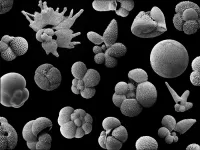(Press-News.org) A UC Davis Health study reveals persistent racial and social disparities preventing access to autoHCT, a common bone marrow transplant treatment to halt the progression of multiple myeloma.
An analysis of data from three California health care organizations, published in Clinical Lymphoma, Myeloma & Leukemia, showed that Black myeloma patients were less likely to receive autoHCT. This was despite having a greater risk of developing the cancer than other racial or ethnic groups. Patients using Medicaid, Medicare, or no insurance in California also accessed the treatment less than those with other insurance options.
“It’s important that we remain aware that these disparities exist in our state and our health care system, since they do affect clinical outcomes for patients,” said Naseem Esteghamat, a UC Davis assistant professor of malignant hematology, cellular therapy, and transplantation. “Now, we want to move beyond recognizing that such disparities exist and address barriers to cancer patients receiving care.”
What is Multiple myeloma and how is its treated?
Multiple myeloma is a cancer of plasma cells found in bone marrow. These cells secrete disease-fighting antibodies as part of the immune system. In patients with myeloma, cancerous plasma cells grow out of control and crowd out healthy cells, causing fractured bones, bruising, fatigue, and weakness.
While myeloma isn’t curable, Esteghamat noted that it’s highly treatable, with treatment goals including inducing remissions, increasing progression-free intervals, and overall survival. First-line treatments may include autologous hematopoietic cell transplantation, or autoHCT, if patients respond well to initial chemotherapy.
“With autoHCT, we collect a patient’s healthy stem cells and freeze them. Then, they receive a high dose of chemotherapy to eradicate residual myeloma cancer cells,” explained Esteghamat, who is affiliated with UC Davis Comprehensive Cancer Center.
High-dose chemotherapy wipes out healthy bone marrow cells, impairing a patient’s immune system and making them more prone to infections.
“Following that dose of chemotherapy, we supply them with their own stems cells intravenously, which helps them repopulate the cells of their bone marrow and immune system,” she explained.
Stem cell transplantation is associated with slowed disease progression and low treatment-related death rates. It’s also linked to better overall survival rates in comparison with other myeloma treatments. The problem, according to Esteghamat’s research, is lack of access to autoHCT.
Sociodemographic factors affect autoHCT usage
Previous research has uncovered lower rates of autoHCT usage related to socioeconomic status and race. Esteghamat was inspired by her mentor and study co-author, Theresa Keegan, to determine if those disparities in treatment rates persisted in spite of increased education about autoHCT’s effectiveness. Keegan is a professor of medicine and UC Davis Comprehensive Cancer Center member.
The research team used data from the California Cancer Registry (CCR), the Center for International Blood and Marrow Transplant Research, and the California Patient Discharge Database. They studied rates of autoHCT usage in patients diagnosed with myeloma between 1991 and 2016. The CCR provided demographic information, such as race, ethnicity, and insurance status, along with neighborhood socioeconomic status (nSES): an aggregate of education, employment status, poverty, and other measurements.
Of the 29,109 patients diagnosed with myeloma between 1991 and 2016, 18.9% received autoHCT. Despite having myeloma rates almost twice that of white patients, Black/African American patients received a lower proportion of the transplant therapy — 15.8% — than other racial and ethnic groups. Rates declined after 2005. Neighborhood socioeconomic status also played a role in treatment options, with higher rates of autoHCT usage among patients residing in higher nSES neighborhoods.
At 28.4%, the proportion of patients receiving transplant therapy was higher among those with private or military health insurance than those with Medicare, Medicaid, or no insurance. Older age at diagnosis or comorbidities — health issues in addition to myeloma — also decreased the likelihood that a patient received the treatment.
While the study was able to identify socioeconomic disparities in myeloma treatment options, Esteghamat and her colleagues could only speculate about their reasons.
“One previously published study showed that after patients were referred to a transplant center, there were no more disparities in treatment based on race or ethnicity, which means that we need to determine which social barriers are preventing access to these centers,” Esteghamat said.
Financial burdens, lack of caregiver support or transportation, physician bias, referral bias, cultural beliefs, and other factors can contribute to lack of access to autoHCT, according to the study authors. They emphasized the need for more research into how Medicare and Medicaid plans affect patient evaluation for autoHCT eligibility, frequency of referrals to transplant centers, and additional impacts of insurance options. The authors added that mitigating social and economic barriers can lead to more equitable use of an effective cancer treatment, and better outcomes for patients.
UC Davis coauthors of this study are Ann Brunson, Julianne J.P. Cooley, Aaron S. Rosenberg, Renata Abrahão, and Ted Wun of the Comprehensive Cancer Center. Other coauthors include Sara J. Schonfeld, Bryan Valcarcel, and Lindsay M. Morton of the National Cancer Institute; Christa L. Meyer of the National Marrow Donor Program/Be The Match; Jeffery J. Auletta of the National Marrow Donor Program/Be The Match and Nationwide Children’s Hospital; and Lori Muffly of Stanford University.
END
New study points to racial and social barriers that block treatment for multiple myeloma
2024-04-23
ELSE PRESS RELEASES FROM THIS DATE:
Rensselaer researcher finds that frog species evolved rapidly in response to road salts
2024-04-23
When we think of evolution, we think of a process that happens over hundreds or thousands of years. In research recently published, a team led by Rick Relyea, Ph.D., professor of biological sciences and David M. Darrin ’40 Senior Endowed Chair at Rensselaer Polytechnic Institute, found a species of frog that has evolved over the course of merely 25 years. The adaptation was spurred on by something many assume is innocuous: salt.
“We’ve been applying de-icing salts to reduce car accidents in snowy and icy conditions in the United States for 80 years, and we currently apply four times more road salt than we did ...
A new chapter in quantum vortices: Customizing electron vortex beams
2024-04-23
A new publication from Opto-Electronic Advances; DOI 10.29026/oea.2024.230184 , discusses tailoring electron vortex beams with customizable intensity patterns by electron diffraction holography.
In recent years, the scientific community has witnessed a notable breakthrough in the study and development of electron vortices. Electron vortices are electron beams that carry orbital angular momentum, meaning the electrons move not only in their propagation direction but also rotate in a vortex-like manner. This unique characteristic offers many new physical properties and potential applications, making it a powerful ...
Don’t be a stranger – study finds rekindling old friendships as scary as making new ones
2024-04-23
sychologists from Simon Fraser University (SFU) and the University of Sussex have found that people are as hesitant to reach out to an old friend as they are to strike up a conversation with a stranger, even when they had the capacity and desire to do so. The new research is published today in the journal Nature Communications Psychology.
Scientific research has shown that social relationships are important to human happiness, and that the greater the number and range of friendships that we engage with, the better our wellbeing. But once relationships are formed, some ...
There’s no ‘one size fits all’ when it comes to addressing men’s health issues globally
2024-04-23
Even with important strides in addressing health issues across the globe, men have not benefited equally compared to women. Men’s life expectancies have not grown as steadily as women’s over the past few decades, and they are expected to live about five years less than women, according to 2021 global health data from the Human Mortality Database and the United Nations’ World Population Prospects. The discrepancy in life expectancy between men and women persists in places all over the world, and is even growing in other places.
At a time when health resources are at a premium and need to be wisely allocated, health professionals ...
Comparison of the “late catch-up” phenomenon between BuMA Supreme and XIENCE stents through serial optical coherence tomography at 1–2 month and 2 year follow-ups: A multicenter study
2024-04-23
https://www.scienceopen.com/hosted-document?doi=10.15212/CVIA.2024.0024
Announcing a new article publication for Cardiovascular Innovations and Applications journal. This study was aimed at comparing the “late catch-up” phenomenon between the BuMA Supreme bioresorbable polymer sirolimus-eluting stent and the XIENCE stent through serial optical coherence tomography (OCT) at within 2 months and 2 year follow-ups.
A total of 49 of 75 patients from the PIONEER-II study were enrolled in a 2 year OCT follow-up study; 44 patients with 50 lesions were included in the statistical ...
Marine plankton communities changed long before extinctions
2024-04-23
For hundreds of millions of years, the oceans have teemed with single-celled organisms called foraminifera, hard-shelled, microscopic creatures at the bottom of the food chain. The fossil record of these primordial specks offers clues into future changes in global biodiversity, related to our warming climate.
Using a high-resolution global dataset of planktonic foraminifera fossils that’s among the richest biological archives available to science, researchers have found that major environmental stress events leading to mass extinctions are reliably preceded by subtle changes in how a biological ...
Research reveals tools to make STEM degrees more affordable
2024-04-23
In a new study in Issues, Dominique J. Baker, an associate professor in the College of Education and Human Development and the Joseph R. Biden, Jr. School of Public Policy & Administration at the University of Delaware, explored the role of student loans on hopeful students striving for college degrees, particularly in STEM.
The cost of attending a public four-year college in the United States has more than doubled since the early 1990s, when inflation is factored in.
Undergraduate student loan debt has become unmanageable for a wide swath of borrowers ...
Q&A: UW research shows neural connection between learning a second language and learning to code
2024-04-23
As computer programming becomes an increasingly valued skill in the workforce, there is a greater need to understand how people learn to code most effectively.
Statistics show that up to 50% of students who enroll in introductory programming courses in the United States eventually drop out, suggesting a mismatch between how coding is learned and the way it’s taught. A new study from the University of Washington, published March 5 in Scientific Reports, examines that issue.
The researchers recorded electrophysiological brain responses of varyingly skilled programmers as they read ...
Keane wins 2024 Gopal K. Shenoy Excellence in Beamline Science Award
2024-04-23
Physicist Denis T. Keane is the 2024 recipient of the Gopal K. Shenoy Excellence in Beamline Science Award. He is a beamline scientist and director of the Dupont-Northwestern-Dow Collaborative Access Team (DND-CAT) at the U.S. Department of Energy’s (DOE) Advanced Photon Source (APS) at DOE’s Argonne National Laboratory. He is also a research professor in the Materials Science and Engineering Department at Northwestern University.
The annual award recognizes active beamline scientists at the APS, ...
Livestock abortion surveillance could protect livelihoods and detect emerging global pathogens
2024-04-23
A small-scale surveillance system in Tanzania for reporting livestock abortions could help protect livelihoods and provide insights on potential livestock-to-human infections.
The research, published April 16 as a Reviewed Preprint in eLife, is described by editors as an important study with convincing findings of potential interest to the fields of veterinary medicine, public health and epidemiology.
Loss of livestock through abortion is a major concern for the worldwide livestock industry, resulting in significant ...



